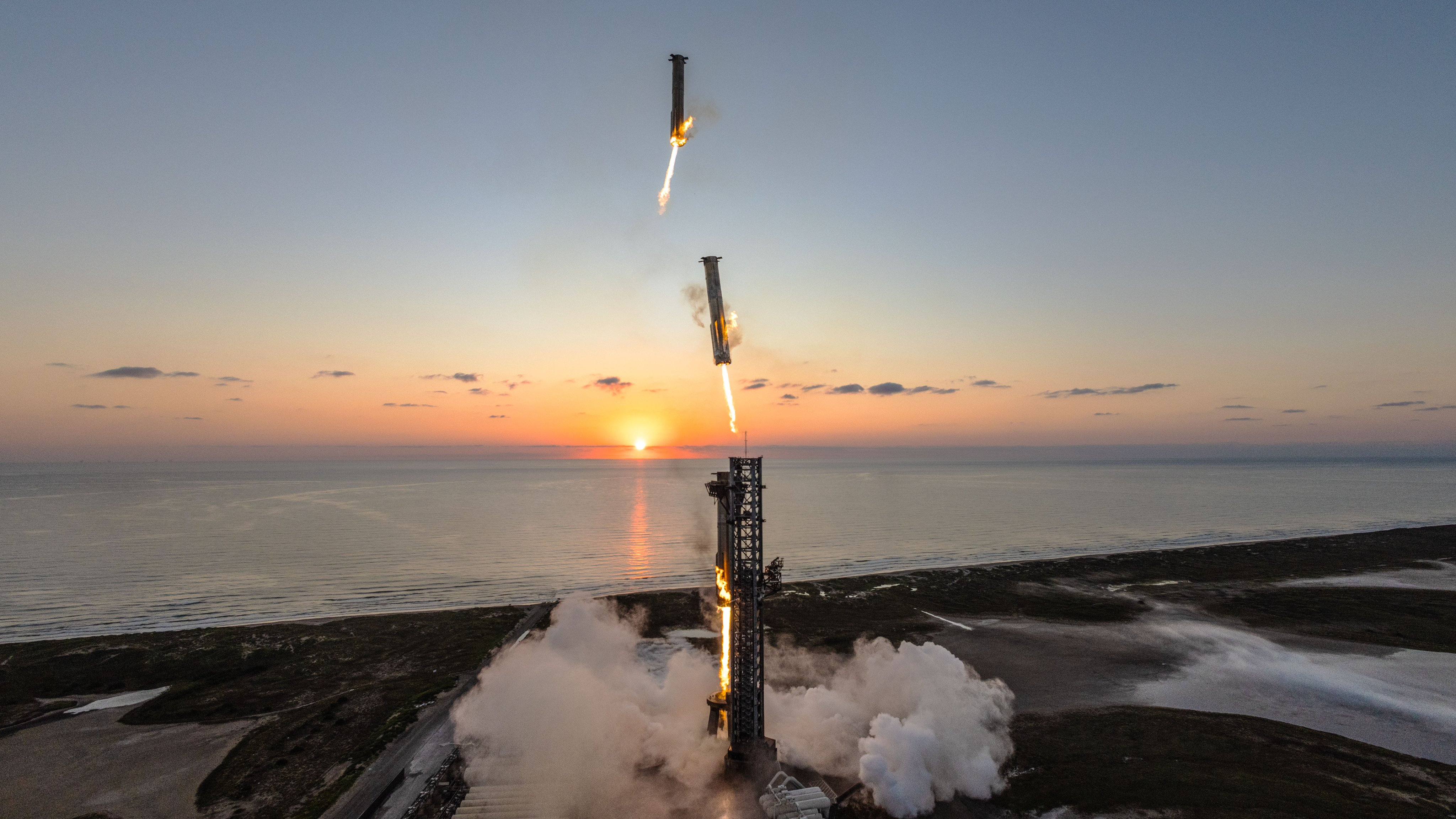SpaceX plans to catch Starship upper stage with 'chopsticks' in early 2025, Elon Musk says

SpaceX doesn't plan to rest on its rocket-catching laurels.
The company made spaceflight history on Sunday (Oct. 13) during the fifth test flight of its Starship megarocket: About seven minutes after liftoff, the vehicle's first-stage booster, known as Super Heavy, came back to its launch mount, where it was caught by the "chopstick" arms of the launch tower.
And SpaceX aims to do the same with Starship's 165-foot-tall (50 meters) upper-stage spacecraft — known as Starship, or simply Ship — in the coming months as well, according to company founder and CEO Elon Musk. "Hopefully early next year, we will catch the ship too," Musk said Tuesday (Oct. 15) in a post on X (formerly Twitter).
SpaceX is developing the 400-foot-tall (122 meters), fully reusable Starship to get people and cargo to the moon and Mars, and perform a variety of other spaceflight feats as well. Things are going well; the vehicle's most recent two test flights — on June 6 and this past Sunday — were complete successes, according to the company.
So it shouldn't be a big surprise that SpaceX plans to push the envelope, bringing Ship back safely on one or more upcoming test flights. (On recent missions, the upper stage has splashed down in the Indian Ocean.)
Related: Starship and Super Heavy explained
Launch-tower catches of Ship likely won't apply to all of the vehicle's missions, however. For example, the upper stage will carry people to the surface of the moon and Mars, if all goes according to plan — jaunts that will presumably require propulsive, vertical touchdowns made with the aid of landing legs.
Breaking space news, the latest updates on rocket launches, skywatching events and more!
But SpaceX also envisions launching many Starship missions to Earth orbit — for example, to continue building out its huge Starlink broadband megaconstellation, and to help refuel other Starships that are bound for distant realms. Launch-mount landings make sense for these craft, allowing them to fly to and from Earth orbit quickly and efficiently.

Michael Wall is a Senior Space Writer with Space.com and joined the team in 2010. He primarily covers exoplanets, spaceflight and military space, but has been known to dabble in the space art beat. His book about the search for alien life, "Out There," was published on Nov. 13, 2018. Before becoming a science writer, Michael worked as a herpetologist and wildlife biologist. He has a Ph.D. in evolutionary biology from the University of Sydney, Australia, a bachelor's degree from the University of Arizona, and a graduate certificate in science writing from the University of California, Santa Cruz. To find out what his latest project is, you can follow Michael on Twitter.

